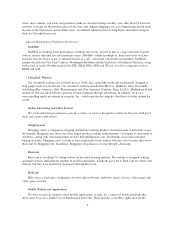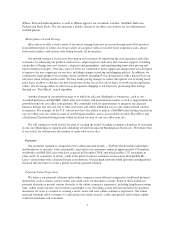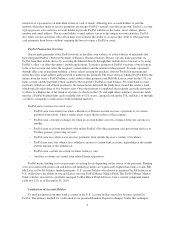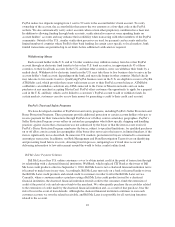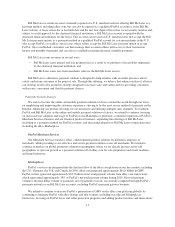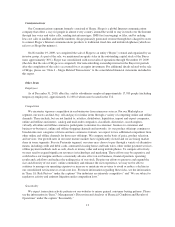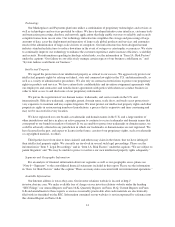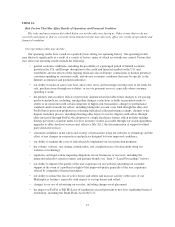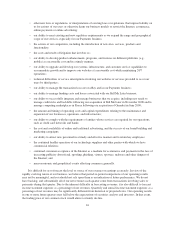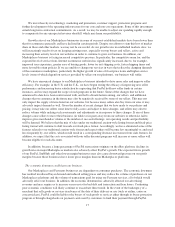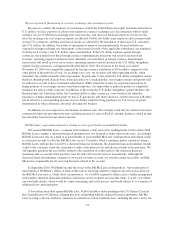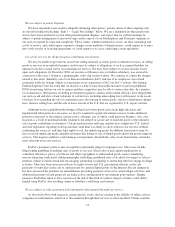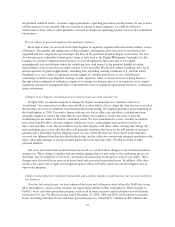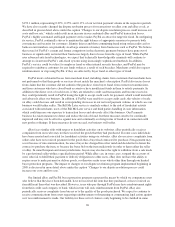eBay 2010 Annual Report Download - page 21
Download and view the complete annual report
Please find page 21 of the 2010 eBay annual report below. You can navigate through the pages in the report by either clicking on the pages listed below, or by using the keyword search tool below to find specific information within the annual report.• other new laws or regulations, or interpretations of existing laws or regulations, that impose liability on
us for actions of our users or otherwise harm our business models or restrict the Internet, ecommerce,
online payments or online advertising;
• our ability to meet existing and new regulatory requirements as we expand the range and geographical
scope of our services, especially for our Payments business;
• the actions of our competitors, including the introduction of new sites, services, products and
functionality;
• the costs and results of litigation that involves us;
• our ability to develop product enhancements, programs, and features on different platforms (e.g.,
mobile) at a reasonable cost and in a timely manner;
• our ability to upgrade and develop our systems, infrastructure, and customer service capabilities to
accommodate growth and to improve our websites at a reasonable cost while maintaining 24/7
operations;
• technical difficulties or service interruptions involving our websites or services provided to us or our
users by third parties;
• our ability to manage the transaction loss rate on eBay and in our Payments business;
• our ability to manage funding costs and losses associated with our Bill Me Later business;
• our ability to successfully integrate and manage businesses that we acquire, including new needs to
manage credit risks and bad debts following our acquisition of Bill Me Later in November 2008 and to
manage competing marketplaces in Korea following our acquisition of Gmarket in June 2009;
• the amount and timing of operating costs and capital expenditures relating to the maintenance and
expansion of our businesses, operations, and infrastructure;
• our ability to comply with the requirements of entities whose services are required for our operations,
such as credit card networks and banks;
• the cost and availability of online and traditional advertising, and the success of our brand building and
marketing campaigns;
• our ability to attract new personnel in a timely and effective manner and to retain key employees;
• the continued healthy operation of our technology suppliers and other parties with which we have
commercial relations;
• continued consumer acceptance of the Internet as a medium for ecommerce and payments in the face of
increasing publicity about fraud, spoofing, phishing, viruses, spyware, malware and other dangers of
the Internet; and
• macroeconomic and geopolitical events affecting commerce generally.
It is difficult for us to forecast the level or source of our revenues or earnings accurately. In view of the
rapidly evolving nature of our business, we believe that period-to-period comparisons of our operating results
may not be meaningful, and you should not rely upon them as an indication of future performance. We do not
have backlog, and substantially all of our net revenues each quarter come from transactions involving sales or
payments during that quarter. Due to the inherent difficulty in forecasting revenues, it is also difficult to forecast
income statement expenses as a percentage of net revenues. Quarterly and annual income statement expenses as a
percentage of net revenues may be significantly different from historical or projected rates. Our operating results
in one or more future quarters may fall below the expectations of securities analysts and investors. In that event,
the trading price of our common stock would almost certainly decline.
16


